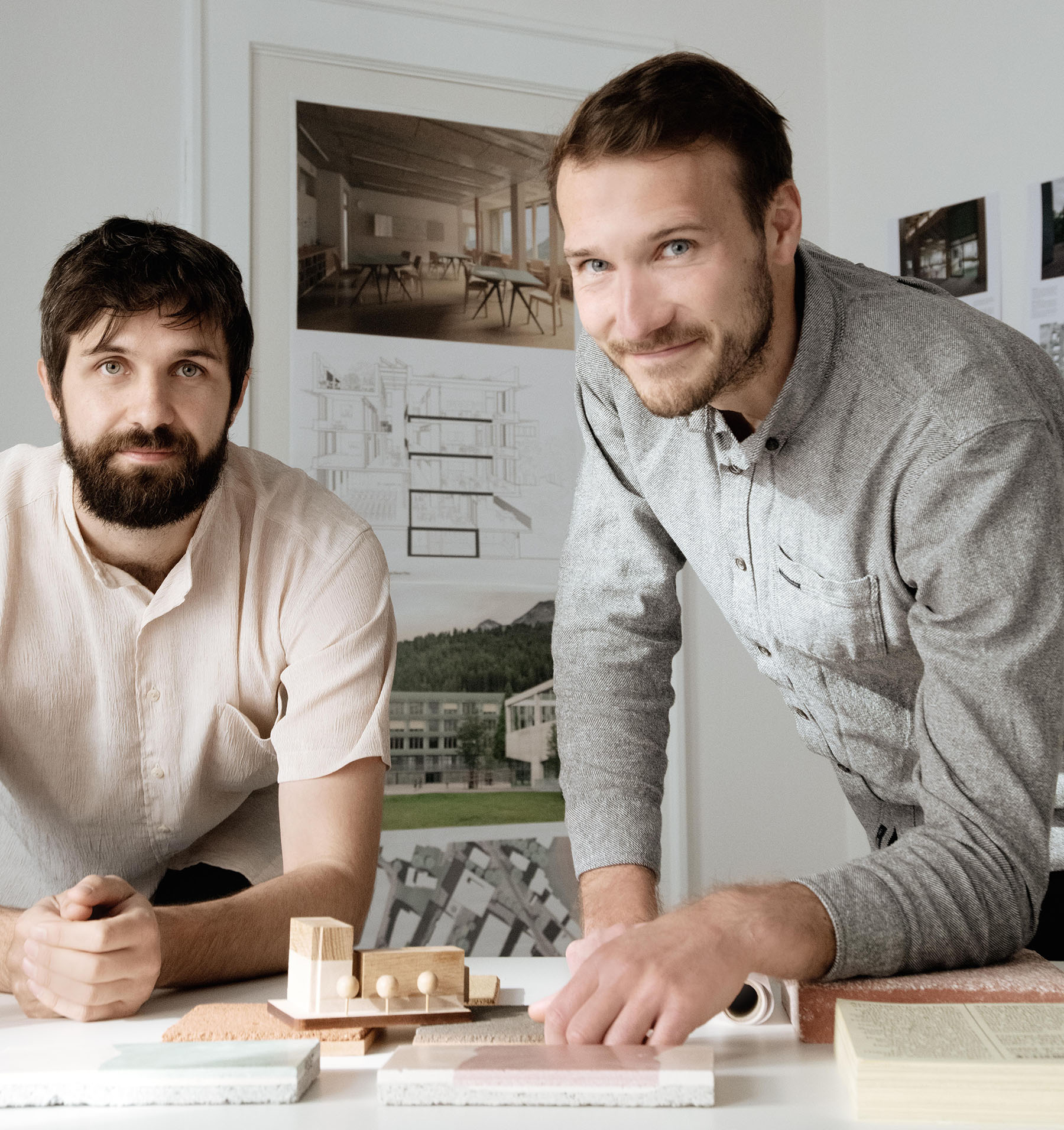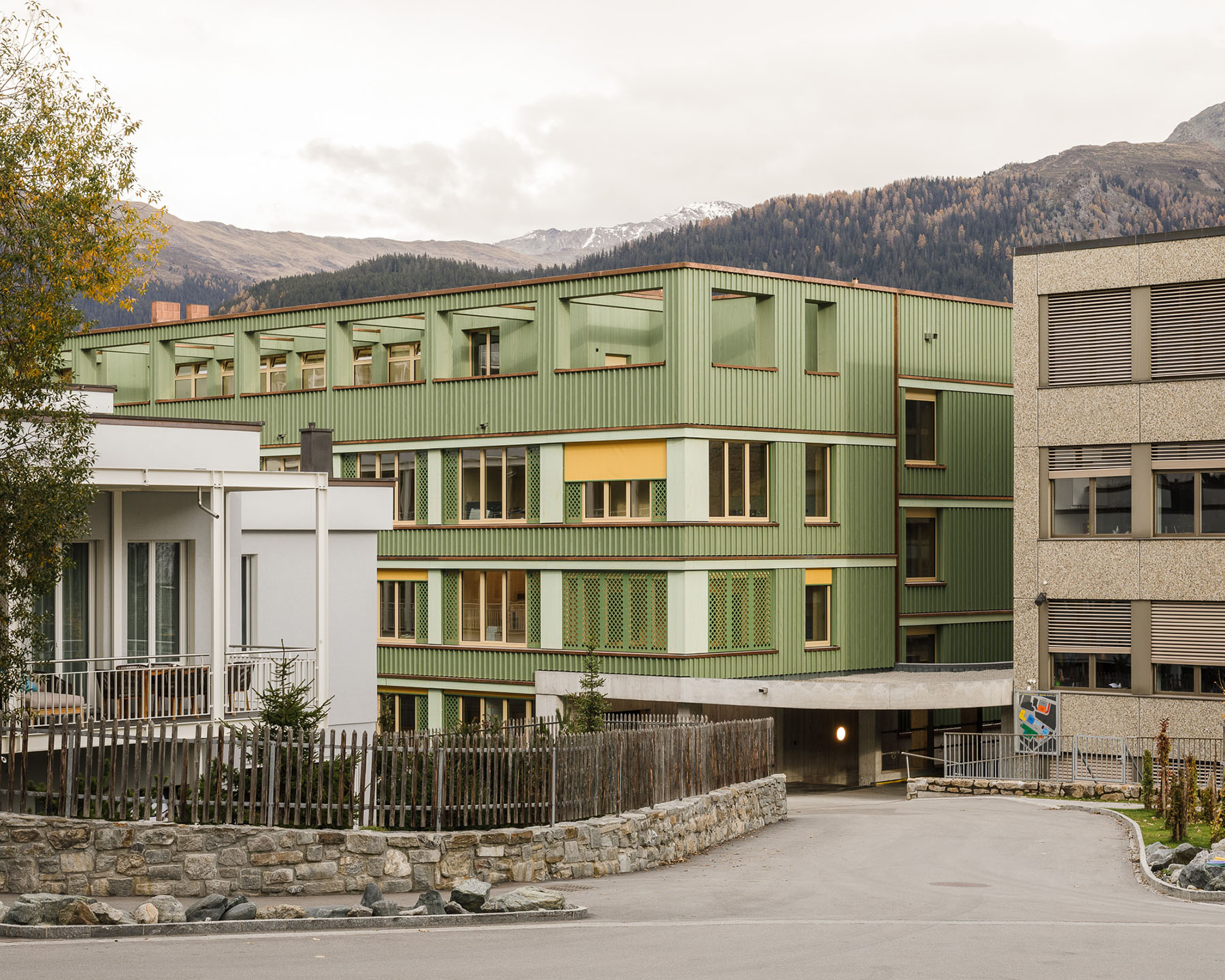Rethinking rural communities

CURA Architekten was founded in 2022 by Otto Closs and Marc Ritz and specializes in responsible, circular building projects. Based in Munich, the young architecture firm pursues an integrative and ecological approach - from design to completion. Its particular expertise lies in the conversion of existing structures and the use of renewable materials. The aim is to combine sustainable architecture with high design standards and at the same time to promote greater and more transparent participation of young offices in the construction industry. For their first project - the extension of the school center in Davos - they were awarded the Polis Award and the Architizer Award.
Marc Ritz studied architecture at the TU Darmstadt. His master's thesis "New Bloomsbury College" was awarded the TU Darmstadt Faculty Prize, received recognition at the University Prize for Timber Construction and was nominated for the BDA-SARP Award. He initially worked for Dietz Joppien Architekten in Frankfurt/Main. He later worked for Waldmann Architekten in Darmstadt. At the same time, he took on teaching assignments at Darmstadt University of Applied Sciences and TU Darmstadt in the field of sustainable building and design from 2019 to 2022. He was also a founding member of the Building Group at Klimaentscheid Darmstadt. He has been a DGNB Registered Professional since 2016.
Otto Closs also studied architecture at TU Darmstadt. He specialized early on in the responsible handling of existing structures. His master's thesis on the "Revitalization of Ehrenfels Castle" was awarded the Baunetz Campus Masters architecture prize. He gained professional experience at Stein-Hemmes-Wirtz Architekten in Frankfurt, Bernhardt & Partner in Darmstadt and internationally at COBE in Copenhagen, where he was involved in the transformation of a hospital in Aarhus. From 2019 to 2021, he managed residential construction competitions at Galli & Rudolf Architekten in Zurich before working on the new construction of the Zurich Children's Hospital at Herzog & de Meuron in Basel. He was also involved in the Countdown 2030 initiative in Basel.
Both have been registered with the Bavarian Chamber of Architects since 2023.
In the winter semester 2025/26, they will take over the Wüstenrot guest professorship on dealing with existing buildings at the Karlsruhe Institute of Technology (KIT).
"With our guest professorship, we want to focus on rural areas and explore the question of how vacancies can be transformed and rural communities can be rethought. We see existing buildings as a valuable resource that needs to be written on, supplemented and interpreted. In the winter semester, we would like to work with you to find answers to the challenges of sustainable and social change in rural areas."
Website
https://cura-architekten.de/
Instagram
∂cura_arch

Fig.: Davos School Center
About the guest professorship of the Wüstenrot Foundation
After Jurek Brüggen, Hanna Maria Schlösser and Lorenz Kirchner, Christian Weyell and Kai Zipse, Alessandro Gess and others, Marc Ritz and Otto Closs hold the ninth guest professorship of the Wüstenrot Foundation at the KIT Department of Architecture. The visiting professorships complement the courses offered in the Master's degree program in Architecture for one semester each by making relevant and responsible contributions to the major social challenges facing building in the present and future.
The visiting professorships address issues of climate change and its ecological and socio-economic consequences for the built environment, the energy transition with regard to the refurbishment of existing buildings and building culture, the scarcity of resources and the circular economy, digitalization and its opportunities for new building production, but also issues of rapid global urbanization, advancing demographic and employment-related change and its effects on the planning of new living environments and spaces.
